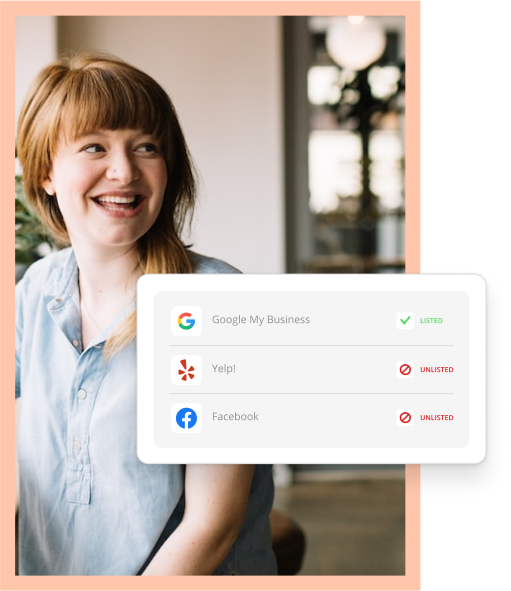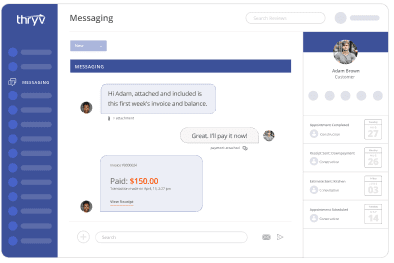Over the past few years, you may have heard that small business outlook is heading for doom and gloom. But actually, what small business owners are saying is: Heck, I’m still really busy!
The NFIB Small Business Optimism Index reported an eight-month record high in July, signaling that small businesses were feeling even more optimistic about the next six months. And while there are still plenty of challenges that come with owning and operating a small business today, those end-of-times predictions just aren’t coming to fruition.
That’s what we’re hearing from the small businesses we connect with every day. They’re confident in saying that the long-awaited recession is simply not happening. While some are building doomsday bunkers, most small businesses just aren’t slowing down.
In fact, just last week I was visiting an Atlanta-based custom glass company with one of our Thryv Business Advisors. The owner said that the summer season has been busier than ever. It has even surpassed the fast pace of 2019.
So why are small businesses doing better than expected? Turns out, consumers are feeling better, too. Consumer confidence is at a two-year high, according to the Conference Board’s Consumer Confidence Index. And when consumers are confident, they spend more, and keep small businesses humming along.
Good News for Small Business
When I meet with small businesses today, I’m starting to hear less about workforce issues, which is a positive sign. Finding trustworthy employees is a key component of long-term growth for small businesses — you can’t do it alone for the long-haul.
Also, since the economy at its core is still strong, consumers are spending that disposable income. For those small businesses in the “nice to have” camp, like spas and gyms, this is great news. Those in the “must-have” camp, such as roofers and plumbers — well, they’re as recession proof as you can get.
Speaking of nice to haves, I had the chance to speak with Misti Kauffman, owner of Grand Forks, N.D.-based Balloons by Misti, who’s been a Thryv client for more than a year. She said her customer calls are multiplying, reflecting that consumers are indeed spending that disposable income.
She’s been running the business on her own since 2009, but she’s been so busy that she’s hiring family members to help her out.
Lingering Challenges for Small Business
This isn’t all to say that everything’s been sunshine and rainbows for small business. Supply chain issues and increased material prices have taken their toll. In fact, small businesses are at the point now where they can no longer pass on those higher costs to their customers.
They’re going to need the costs of their supplies to stay where they are or come down. They say: I can’t keep increasing this cost on my customer, or they’ll just say I don’t need it that bad.
Another big challenge I’m seeing for small businesses is the ability to borrow money at manageable rates. If they want to grow significantly, typically a small business will take a loan, and that’s extremely difficult right now.
Loan rates are so exorbitant, it’s going to stunt growth. If a business can’t find affordable loans, they’re not going to invest in new equipment or get a third or fourth truck for their team.
Small businesses that need funding are going to have to get creative. Crowd-sourcing funding is one clever way we’ve seen businesses raise the capital they need — $5 at a time. That kind of outside-the-box thinking will help businesses generate money so they’re not having to pay a significant portion of their profits back to the bank.
Building a Stronger Future for Your Small Business
Even when you’re feeling positive about the future, there’s plenty you can do for your business to build and healthy and sustainable future, regardless of what the economy has in store for us. Here are 4 suggestions from the front lines with our customers:
1. Maintain Repeatable Processes
One thing we witness with small businesses is that they complete a lot of tasks in an ad-hoc sort of way. An invoice is never created the same way twice or customer contact information is stored in a variety of ways.
These make it impossible for you to grow, since you’re wasting time making up the process with each interaction. Create processes for everything from gathering money to sending appointment reminders.
I know there’s a big chasm to cross in adopting a process or a system for your business’s workflows. And there’s some pain and fear in changing how you do things. But you simply can’t scale something that you don’t have processes for.
I recently had the chance to speak with Steve McNamer, the owner of MCD Quality Services, based in Tacoma, Wa. Here’s his take:
“If you want to scale at all, you have to have processes and systems in place,” he says. “I need everything in one place to help me run my business instead of having to piecemeal it. This provides a foundation to work through any economic time and business ups and downs.”
A Thryv customer for nearly a year, Steve sums it up perfectly: “You need to be ready for anything your business may face, the slow periods and the busy periods, by ensuring you have a system and approach to run your business.”
2. Stay Present with Your Customers
I’ve long believed that customers cancel in your absence, so you have to stay present. You have to remind them that you’re there – in a non-salesy way that also adds value.
So, if you’re a plumber, you could have a newsletter with tips for preventative maintenance, or ways to take care of your water heater so you save money in the long-term. And then set up automation to send those out (which is a repeatable process, too)!
3. Be Wherever Your Customers Are
Yes, I’m talking about social media. There’s a very real expectation that if you’re a legitimate business, you are on Facebook, Instagram, LinkedIn … wherever your customers hang out. And once you’re there, people can communicate with you.
Then, you’ll need a system to ensure that you can easily communicate across all those apps, as well as Gmail, your website, texting and more.
Keep in mind, they’ll expect an immediate response. If it takes you 48 hours to get back to them — they’re gone. And that’s a lost opportunity.
4. Happy Employees = Happy Customers
The kind of environment that you set up for your employees is going to have a direct and linear impact on the experience that you deliver to your customers. You have to focus on the employee experience to deliver a great customer experience.
This covers everything from providing the right tools and training they need to do the job to helping them understand your long-term vision.
When employees know you care and feel like they have some skin in the game, they’ll feel part of something bigger that they can believe in.
Having successfully weathered all types of ups and downs in business, Steve from MCD Quality Services said it well:
“When dealing with employees and clients, in my business you have to know what works and what doesn’t,” he says. “You have to make sure that, while you are upholding your values, you are also providing a powerful system to your employees they can utilize when facing your clients (holding customer service to the highest value).”




